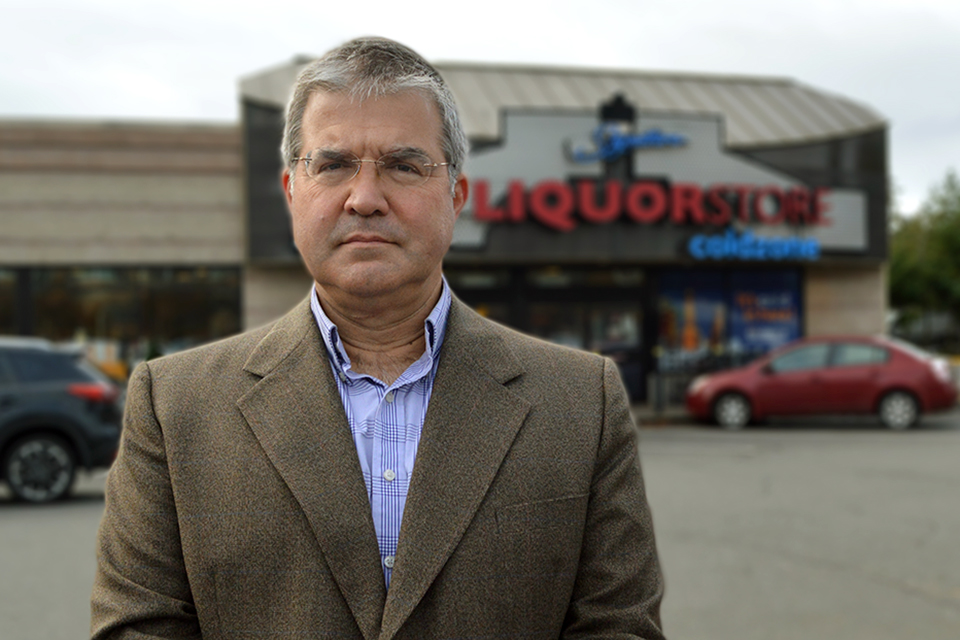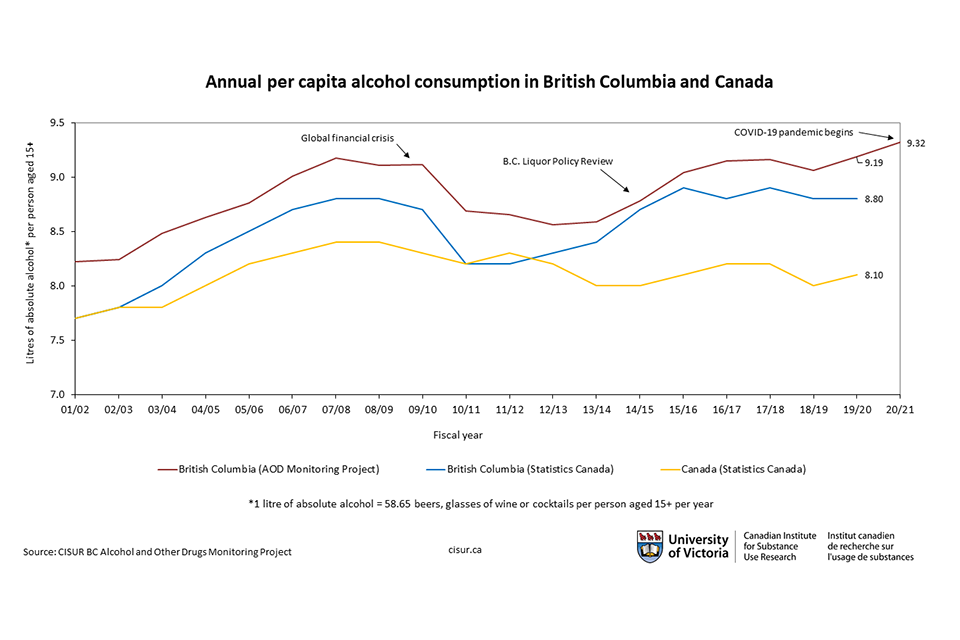Alcohol consumption in BC higher than ever

British Columbians drank more alcohol during the first year of the COVID-19 pandemic than they have in the past 20 years, according to the latest analysis of BC alcohol sales data from the University of Victoria’s Canadian Institute for Substance Use Research (CISUR).
Consumption for this past fiscal year (April 1, 2020 to March 31, 2021) was equivalent to 547 cans of 5% beer or 104 bottles of 12% wine per year for each person aged 15+ in the province. At 9.32 litres (L) of pure alcohol per capita, this the highest level of alcohol consumption recorded since CISUR started monitoring it in 2001. It also confirms the rising trend CISUR first identified in the early months of the COVID-19 pandemic.
“This tells us the higher levels of consumption seen in the first few months of COVID were not the result of stockpiling, but of an overall increase in drinking sustained over the year,” says Dr. Tim Naimi, director of CISUR.
While consumption at bars and restaurants saw large decreases (60% and 46%, respectively), it was more than made up for in increases at private liquor stores, which accounted for 55% of all alcohol sold in the province.

“It has never been easier to buy alcohol in BC, and we know increased availability of alcohol leads to people drinking more,” says Naimi. “COVID-era changes to alcohol policy such as increased hours, government support for liquor retailers to develop online stores, expanded home delivery and declaring liquor stores an essential service have certainly played a role in these increases.”
Measured by health authority, Interior had the highest rates of consumption at 13.69L per capita, with Island Health second at 11.54L. Fraser was the lowest at 7.09L.
“In the past, some regions have pointed to tourism as a reason for above-average consumption rates, the assumption being that visitors accounted for a good chunk of alcohol purchases,” says Naimi. “Given the fact that BC saw many fewer tourists in the summer of 2020, this theory doesn’t appear to hold water.”
This research was supported by Health Canada.
-- 30 --
A media kit containing graphs and a photo of Dr. Tim Naimi is available on Dropbox
Photos
Media contacts
Dr. Tim Naimi (CISUR/Public Health and Social Policy) at 250-472-5445 or tnaimi@uvic.ca
Amanda Farrell-Low (CISUR Communications) at 250-472-5445 or farlow@uvic.ca
Suzanne Ahearne (University Communications + Marketing) at 250-721-6139 or sahearne@uvic.ca
In this story
Keywords: CISUR, alcohol, COVID, addiction, health, research
People: Tim Naimi





